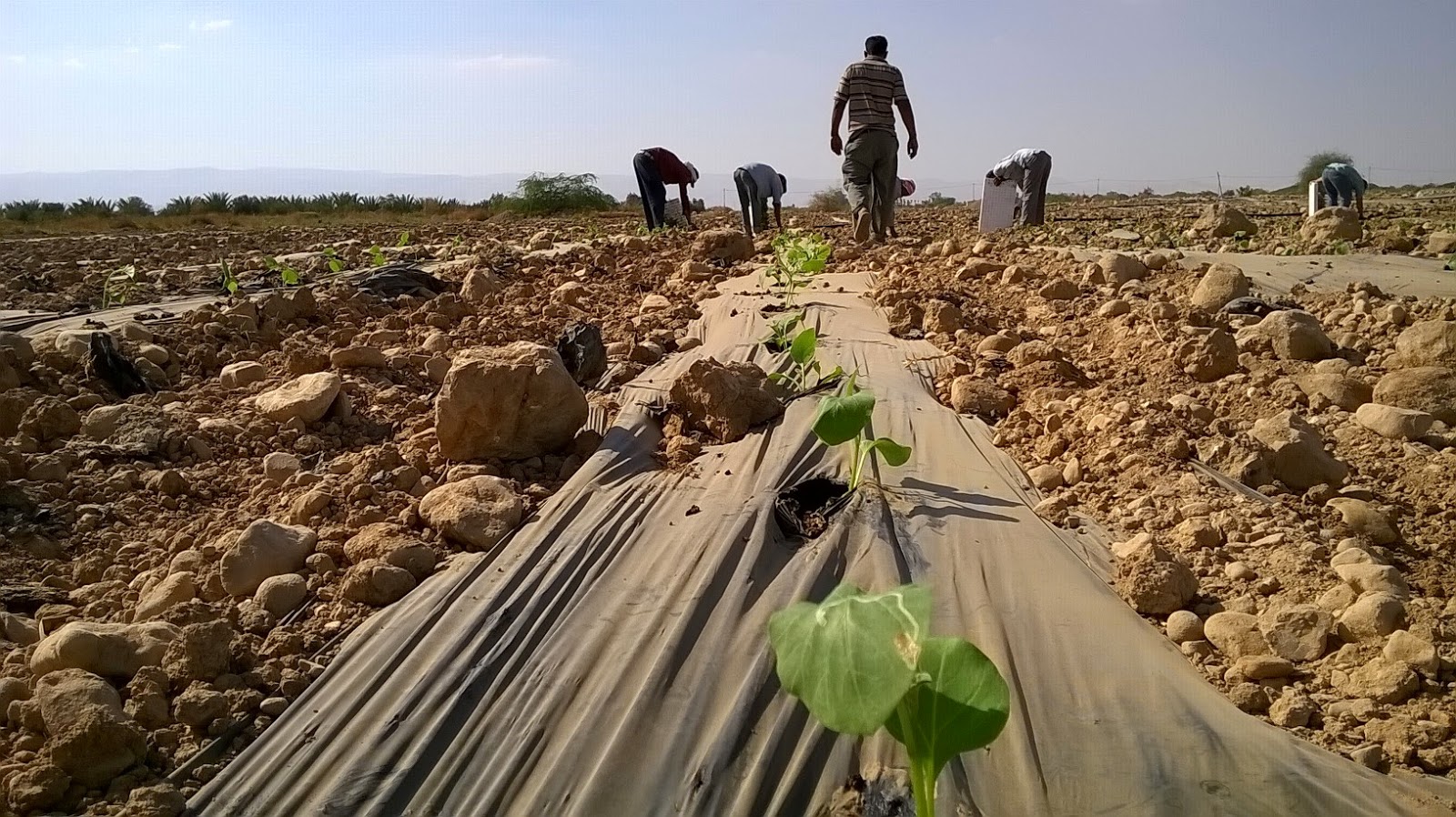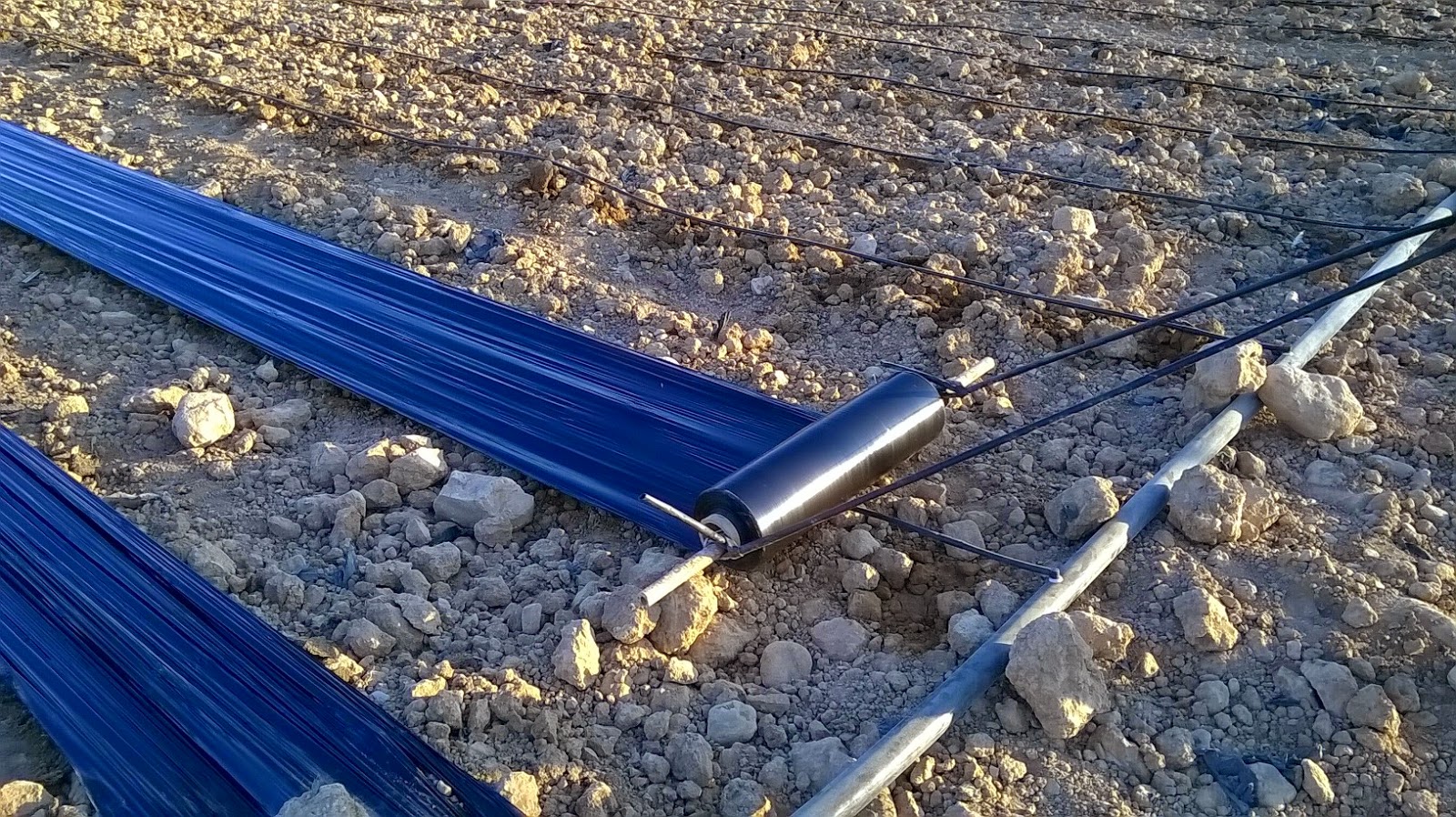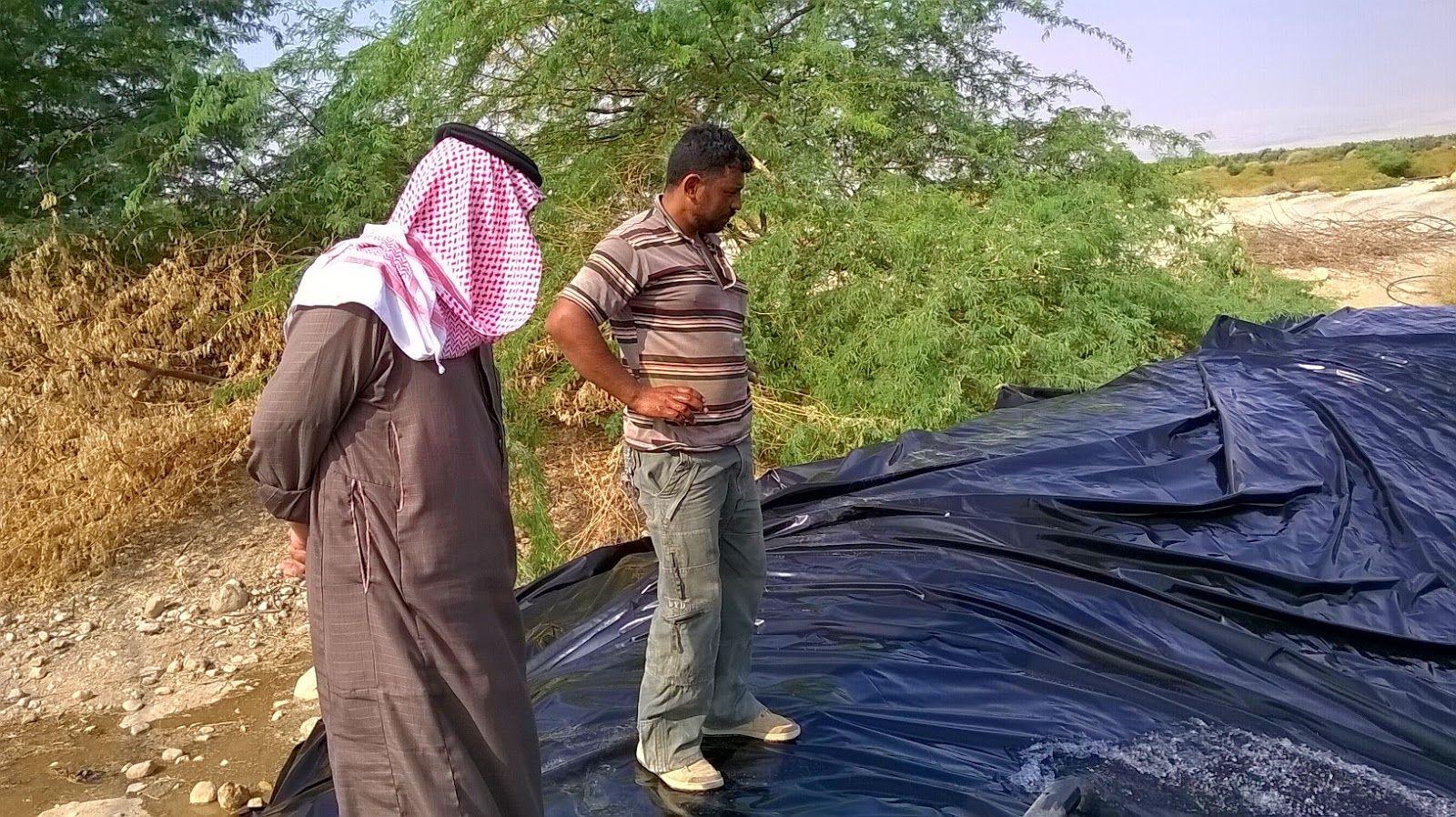Partnering to build hope, capacity and community in the Jordan Valley through agricultural innovation
Thursday, September 18, 2014
Saturday, September 13, 2014
Planting Day
This is the first of many planting days in the weeks to come. Today over 6000 eggplants were planted and tomorrow over 10,000 corn seeds, all by hand. Over the next few months red cabbage, tomatoes, beans, crookneck squash, onions, cucumbers, melons, asparagus and artichoke will all be planted. Many of these will be planted side by side as they compliment one another. This process, known as inter-cropping, enhances the yield and longevity of both partner plants and allows for greater overall productivity. Inter-cropping also consumes less water, land and fertilizer than if the plants were individually planted.
 |
| Planters at work |
 |
| AC4D's Resident Farm Consultant |
 |
| Ag. Projects Manager |
 |
| Plants Eye View |
Friday, September 12, 2014
Neighbor Bio - Musa
Musa has been farming in the Jordan Valley for almost 20 years and is a wealth of information. He regularly consults with the AC4D team regarding planting dates, plant health, early fertilization and cost effective irrigation practices. We are learning a great deal from him. This year he will be planting 4 units, about 40 acres, all in open-field eggplant despite his experience with a wide range of vegetable crops. His main reason for this crop selection is that eggplant can be harvested for well over 4 months enabling him to sell across a wide range of prices as well as the fact that the tomato market has been weak due to closed borders to Iraq and Syria for the last two years.
 |
| Eggplant Expert of the Middle Ghor |
Sunday, September 7, 2014
Plastic Mulch
One of the unique features of farming in the Jordan Valley is that every plant is protected in some way from the effects of water scarcity. Even the open field crops are protected at the root level by plastic mulch which allows more uniform water application as well as a big reduction in evaporation. Plants with water readily available to their root systems do not get water stressed and perform better than plants that go through periods of water scarcity and stress between irrigation times.
.jpg) |
| Plastic Sheet Mulch being laid over the top of drip tubing to inhibit evaporation and enhance even distribution of water |
Wednesday, September 3, 2014
Tuesday, September 2, 2014
Drip Irrigation at Work
Today we installed our pump and began pre-irrigation. Adding moisture before planting softens the ground and mixes organic fertilizer into the soil. This ensures minimum seedling loss and a strong initial growth period. We will put in early season eggplant in two varieties later this week.
 |
| The first drops of water to fall on the AC4D Trial and Demo Farm |
Monday, September 1, 2014
Water
After a number of days trying to get it right our team was finally able to get a huge 25 meter by 25 meter pond liner spread evenly and fill our irrigation pond over a period of 10 hours. It was a milestone in our progress to be able to receive and store about 400 cubic meters (one cubic meter is 1000 liters) of irrigation water. Quality testing puts it at 1600ppm salt, low enough to bring about a high quality vegetable crop but roughly 50% over salinity standards in most of the developed world for food crops. There are very little, if any, silt or undissolved particles that could damage our drip irrigation system.
We purchase our groundwater from a neighbor at a rate of 8 Jordanian Dinar per hour. In that hour we receive roughly 40 cubic meters of water for a unit price of .2 Jordanian Dinar (28 US Cents) per cubic meter.
We purchase our groundwater from a neighbor at a rate of 8 Jordanian Dinar per hour. In that hour we receive roughly 40 cubic meters of water for a unit price of .2 Jordanian Dinar (28 US Cents) per cubic meter.
 |
| Receiving water at a rate of about 40 cubic meters per hour |
 |
| Several of our neighbors came to see the new "Birka" as it is locally known |
Subscribe to:
Posts (Atom)

